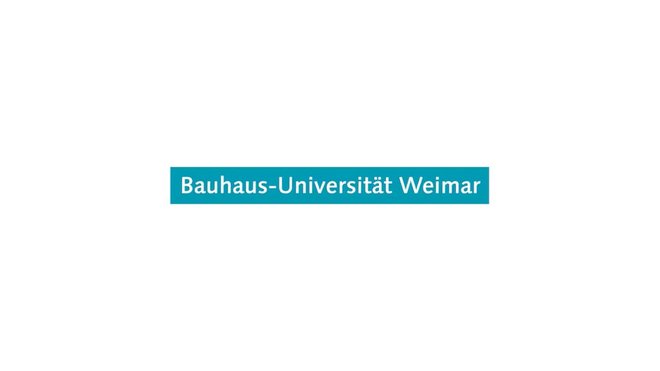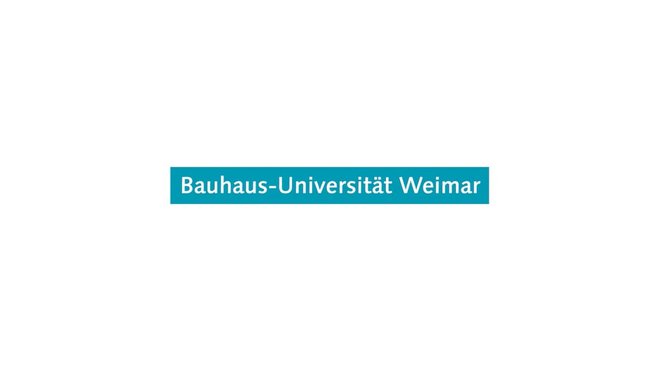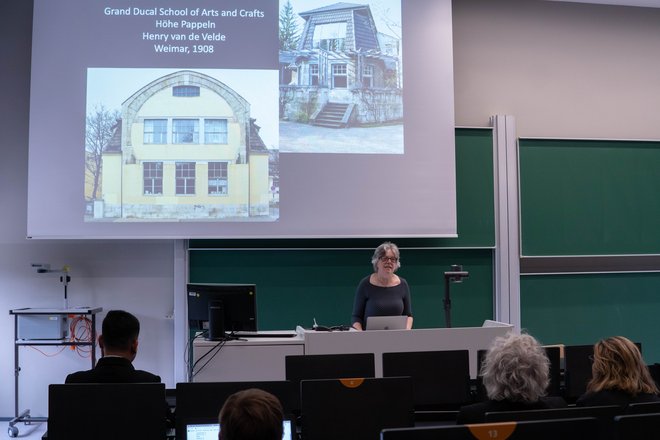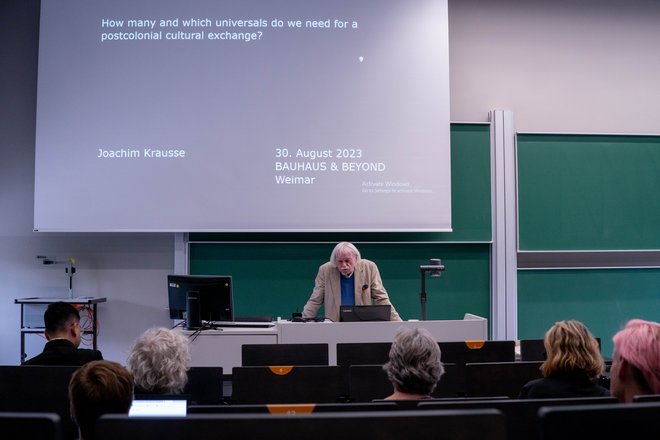Bauhaus & Beyond, One-day Event
Lecture hall B, Marienstraße 13 C, 30th Aug 2023, Wednesday
12:00 - 01:30 pm: "Bauhaus in Tel Aviv - Jaffa between International and Postcolonial tendencies"14:30 - 16:00 pm: "Writing Global Histories: Henry van de Velde and the Belgian Friendship Building"16:30 - 17:30 pm: "How many and which universals do we need for a postcolonial cultural exchange?"17:30 - 18:00 pm: Informal Discussions

Bauhaus in Tel Aviv - Jaffa between International and Postcolonial tendencies" by Naomi T. Salmon
Klicken Sie auf den Play-Button, um externe Inhalte von Vimeo.com zu laden und anzuzeigen.
Externe Inhalte von Vimeo.com zukünftig automatisch laden und anzeigen (Sie können diese Einstellung jederzeit über unsere »Datenschutzerklärung« ändern.)
- 12:00 - 1:30 p.m. - "Bauhaus in Tel Aviv - Jaffa between International and Postcolonial tendencies" by Naomi T. Salmon, Zurich.
In 2003, UNESCO's World Heritage Commission recommended inscribing the 'White City' of Tel Aviv in the organization's list of World Heritage Sites. Of four thousand buildings that were declared as Bauhaus, about half were chosen to be renovated. Naomi Tereza Salmon (Ph.D.) has conducted artistic research to find out what is left of the five principles of new architecture in the levant, where eclectic styles with the Bauhaus principles? Local and imported materials, and municipal, institutional, financial, and environmental decisions, which influence the contemporary postcolonial cityscape, will be explored and discussed.

14:30 - 16:00 pm: Writing Global Histories

“Writing Global Histories: Henry van de Velde and the Belgian Friendship Building” by Kathleen James-Chakraborty
Klicken Sie auf den Play-Button, um externe Inhalte von Vimeo.com zu laden und anzuzeigen.
Externe Inhalte von Vimeo.com zukünftig automatisch laden und anzeigen (Sie können diese Einstellung jederzeit über unsere »Datenschutzerklärung« ändern.)
- 14:30 - 16:00 - “Writing Global Histories: Henry van de Velde and the Belgian Friendship Building” by Kathleen James-Chakraborty , University College Dublin.
The imprint of Henry van de Velde is strong in Weimar, despite the degree to which Walter Gropius consistently belittled his role in establishing what became the Bauhaus. For better or for worse, van de Velde built his career on his ability to move between cultures, most famously acting as a conduit introducing Belgian Art Nouveau to first Paris and then Germany. Less well known is his role in the triangulating between Belgium, its colony in the Congo, and the United States in his design of the Belgian Pavilion at the World's Fair held in New York in 1939 and again in 1940, or that this building was reconstructed on the campus of Virginia Union University, which was established to educate African Americans. The Belgian Friendship Building, about which I am writing a book in collaboration with Bryan Clark Green and Katherine Kuenzli, is an example of the way in which art, economics, and politics relating to very different parts of the world intertwine in stories that can be equally about exploitation, in this case of the people and resources of the Congo, and empowerment, here of an African American educated elite and their increasing demand for equal rights, and the location of a famous European architect, almost unwittingly, between them.

16:30 - 17:30 pm: Postcolonial Cultural Change

"How many and which universals do we need for a postcolonial cultural exchange?" by Joachim Krausse
Klicken Sie auf den Play-Button, um externe Inhalte von Vimeo.com zu laden und anzuzeigen.
Externe Inhalte von Vimeo.com zukünftig automatisch laden und anzeigen (Sie können diese Einstellung jederzeit über unsere »Datenschutzerklärung« ändern.)
- 16:30 - 17:30 - "How many and which universals do we need for a postcolonial cultural exchange?" by Joachim Krausse, Berlin.
This seminar-workshop is designed in a conversation format and calls for exploration of the question/statement - how many and which universals do we need for a postcolonial cultural exchange? Which will be followed by a dialogical structure to discourse. Cultural Exchange seems to be the essence of our teaching and learning in the International Master Programs in Architecture and Design. This exchange of cultural traditions and attitudes in the designing professions presupposes neutral and universal standards of communication. These are technical, like numerical systems or the binary code, as well as non-technical means of exchange like music or coloring. Yet, in the predominant tool of understanding, we are dependent on a lingua franca in the scientific discourse. This is currently the general use of the English language, which itself is contaminated by its rule in the colonial power structure of the British Empire. From antiquity through the Middle Ages the scholars preferred for their mutual understanding a dead language, Latin. This was the first attempt at a true postcolonial practice in scientific exchange. The price for this successful practice was exclusivity. If we now have to work out guidelines for postcolonial cultural exchange, we could learn of the process of establishing universal standards beyond power play. Good examples of this are to be found in the revolution of general accounting by the wandering of the concept of zero from east to west along the Silk Road and the introduction of the cipher into the general accounting system. This was an achievement of intercultural exchange by translation on a global scale without any colonial shadow.

17:30 - 18:00 pm: Informal Discussion
- 17:30 - 18:00 - The above seminars was followed by a short 30 minutes informal discussion with the speakers.

For queries/suggestions, feel free to drop an email to pappal.suneja@uni-weimar.de
